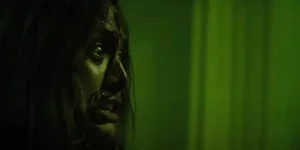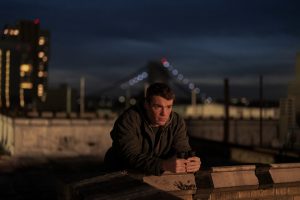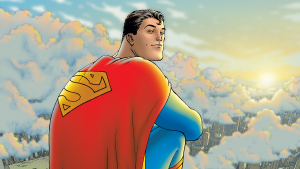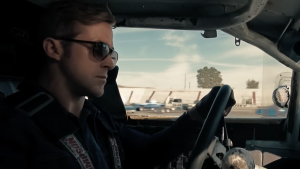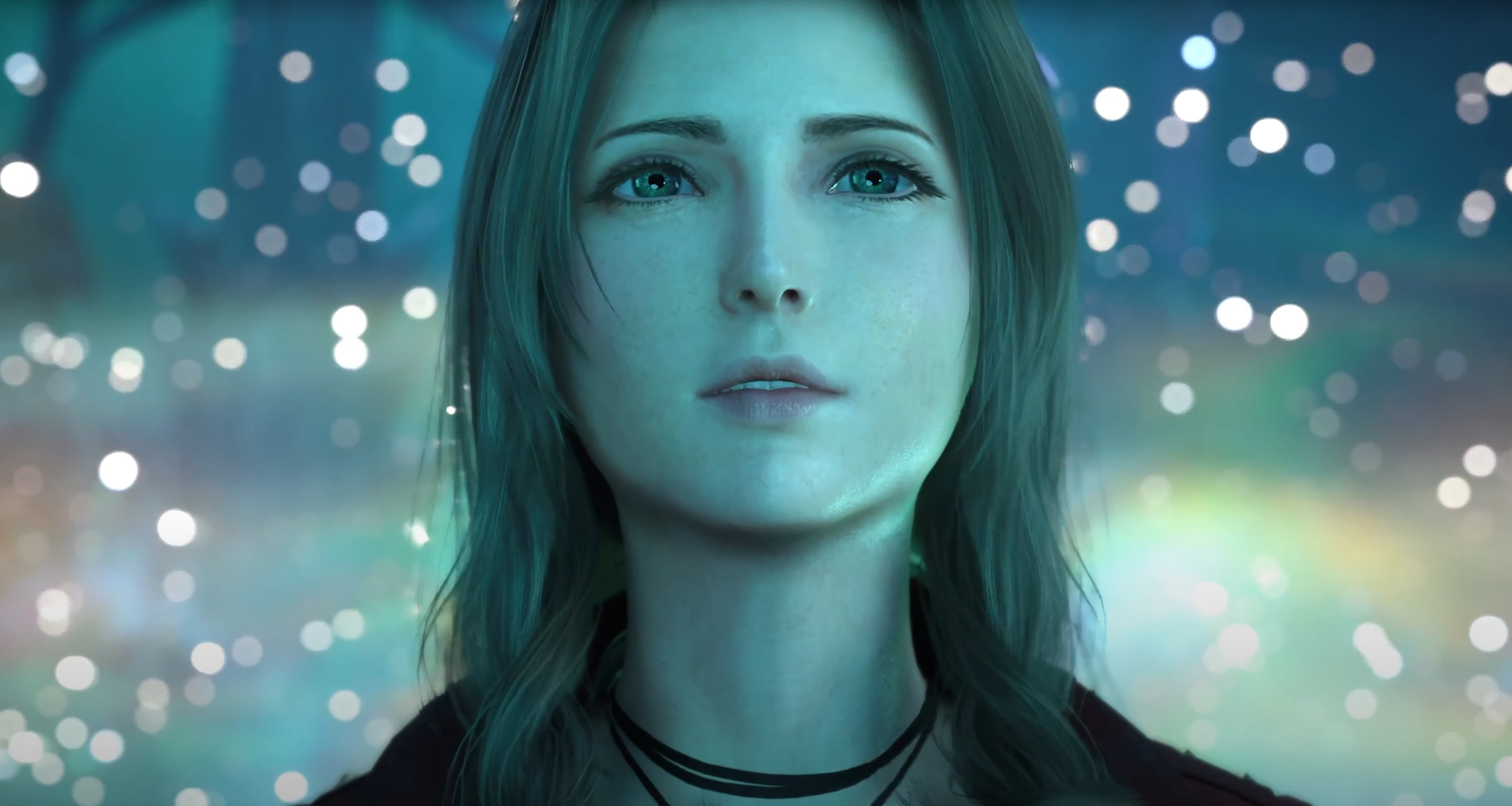
This article contains spoilers for Final Fantasy 7 Rebirth.
If you thought Final Fantasy 7 Remake was a mind-blowing re-imagining of Final Fantasy 7, just wait until you try to wrap your head around Final Fantasy 7 Rebirth. The Final Fantasy team has their gloves off at this point, and they’re crafting a story that is proving to be every bit as convoluted and confusing as the “best” of the Kingdom Hearts series.
So, while we’re going to dive into Rebirth‘s final moments to help make sense of everything, I should emphasize that so much of this game is clearly meant to be left up to interpretation (at least for the moment). I will offer some theories about what all of this may mean, but there are certain answers we’re just not yet meant to know quite yet.
For that matter, be sure to read our breakdown of Final Fantasy 7 Remake‘s ending if you need to get caught up on some of the broad strokes of what’s happening. There is…a lot to talk about, and much of it will be incomprehensible if you’re not up to speed on the previous game.
What Is Sephiroth’s Plan In Final Fantasy 7 Rebirth?
In the original Final Fantasy 7, Sephiroth desired to use powerful Black Materia to summon a Meteor capable of destroying the world. By doing so, he hoped to unleash an ocean of a powerful force in the world known as the Lifestream. Sephiroth believed that harnessing that wealth of Lifestream essence would allow him to become a god.
In Remake/Rebirth, Sephiroth is seemingly attempting to complete a much more ambitious version of that plan. Rather than simply destroy the planet, Sephiroth wants to destroy every timeline across the multiverse that Final Fantasy 7 Remake introduced (or at least emphasized). Why? Well, on some level he seems to recognize that he can’t follow the timeline of the original game or he will fail. So, he must look towards the multiverse.
Broadly speaking, though, he seems to want to unite all multiverse threads into one continuity and then destroy that continuity. In doing so, he seems to believe that he can utilize a multiversal variant of the Lifestream that will allow him to rule over all universes. While Sephiroth doesn’t exactly lay out this plan in a grand monologue, he does reference an event he is trying to trigger known as “Homecoming,” which is seemingly the event that will unite the multiverses and bring them to a catastrophic fate.
Unable to stop Sephiroth from summoning the meteor, Aerith believes that she can use the power of White Materia to summon a Holy barrier that will protect the planet. Well, at least that’s the plan in the original game.
In Rebirth, it seems that Aerith still seeks to protect her planet/timeline, though there is more than a little ambiguity regarding the potential effectiveness of that plan on a multiversal scale. For the moment, though, it matters more to know that Aerith believes that this is the right thing to do. She is so convinced it’s the right thing to do that she decides to head to the Forgotten Capital to complete the Holy summoning ritual (much as she did in the first game) without waiting for her friends. Before we join her there, though, let’s discuss some of the most important players in this multiversal drama
Who Are the Light and Dark Whispers?
Final Fantasy 7 Remake introduced us to The Whispers: ghostly figures who seemingly try to influence the events of the multiverse. In Rebirth, we learn that Dark Whispers are trying to disrupt the pre-existing timeline, either because they are working for Sephiroth, are manifestations of his abilities/new form, or simply serve a similar interest. Light Whispers are attempting to maintain the order of the timelines through whatever means necessary. Said means include everything from resurrection to death.
At the risk of oversimplifying this aspect of the game, the Light Whispers are seemingly trying to ensure the major events of the original Final Fantasy 7 play out much as they did before. The Dark Whispers, meanwhile, are more interested in causing the kind of chaos Sephiroth depends on to enact his new plan and defy fate. So, while you could boil them down to “good” and “evil,” they could also be seen as two sides of the same powerful force. Indeed, the power of their presence often causes some truly wild things to occur.
That brings us back to the Forgotten Capital…
Does Aerith Still Die in Final Fantasy 7 Rebirth?
Aerith’s death in the original Final Fantasy 7 is one of the most shocking and impactful moments in all of gaming. It’s so impactful, in fact, that some fans wondered/worried if Aerith would still die in Final Fantasy 7 Rebirth. After all, this Remake series has developed a reputation for defying most expectations, and nothing would defy expectations more than altering perhaps the most iconic moment in Final Fantasy history.
To get to the heart of it, Aerith does die in Final Fantasy 7 Rebirth. To be more specific, she is still stabbed by Sephiroth at the Forgotten Capital in a moment vaguely similar to what happens in the original game. However, the circumstances surrounding that event are heavily altered in a way that raises serious questions about whether or not death is Aerith’s final fate.
When Aerith reaches the Forgotten Captial, she begins to pray in order to complete the Holy summoning ritual, much as she did in the original game. Soon, she is joined by Cloud who attempts to approach her. However, his approach is hindered by Light and Dark Whispers who are swirling around him. At least the Light Whispers are intent on blocking his progress.
Remarkably, though, Cloud does manage to get to Aerith just in time to block Sephiroth’s strike. Just when you think that he finally managed to save Aerith, though, the game “flickers” almost as if the channel has been changed. On this other channel, we see a pool of blood emerge from where Aerith was just kneeling, which obviously seems to imply she has died.
Things get really weird from here as we seem to continue cutting between at least two realities. In both, Cloud is holding Aerith in his arms. In one, though, there is no pool of blood around her and we see Cloud whispering words we do not hear to her. In the other, she is surrounded by blood and Cloud can only weep at her death.
In the “non-blood” reality in which we presume that Aerith may still be alive, Aerith even reaches out to Cloud, smiles at him, and speaks to him. In the reality in which she has clearly been murdered, we watch the White Materia roll away from her body and into the nearby water much like in the original game.
These realities seem to “merge” (at least from our perspective), as we see a version of Aerith surrounded by blood and encircled by what seems to be remnants of the Lifestream reach out to Cloud and smile at him. As Sephiroth speaks of a “confluence of worlds and emotions,” the Light Whispers begin to swirl around Cloud and Aerith. Around this time, the other members of Cloud’s party have joined the scene. As Cloud lays Aerith to rest, they converge on Sephiroth who says that Cloud “cannot see the future with clouded eyes” as he is “just a puppet.”
So what is happening here? We’re clearly not meant to know all the answers at this time, though I can certainly offer a few reasonable guesses.
First off, it seems clear enough that the Light Whispers are trying to ensure that Aerith dies at that moment to preserve that timeline. Given that we previously saw them save Aerith from death in Final Fantasy 7 Remake to do the same, we can presume they are essentially intervening in a similar way here. Of course, the first game also taught us that such interventions can have multiverse-spanning consequences. More on that in a bit.
The idea that we are witnessing two different Aeriths in two realities certainly seems like a viable interpretation. After all, we’ve gotten glimpses into other realities before, and the White Materia that Aerith uses in Rebirth was actually given to her by Cloud who received it from what appeared to be a different Aerith from a different timeline. Theoretically, there are countless versions of Aerith, and at least some of them (if not all of them) have the ability to interact with other timelines.
In theory, then, we may be able to simplify this scene by saying that we see a glimpse of a reality in which Cloud saves Aerith and a glimpse of one in which he does not. Ultimately, we end up back at the one where he does not. The other seemingly viable alternative read of this situation is that we are actually witnessing two different threads that were eventually hastily woven into one continuity. While that continuity results in Aerith’s death, it still bears traces of the timeline in which Aerith has not died.
There is some additional evidence to support that idea, but before we get into that, let’s pivot to another multiverse player we haven’t discussed yet.
Is Zack Fair Really Alive in Final Fantasy 7 Rebirth?
Final Fantasy 7 Remake ended with the shocking implication that the events of the game’s finale somehow led to Cloud’s former friend Zack Fair essentially being resurrected. Fans waited to see if this apparently alive Zack Fair would somehow join Cloud and his crew in Rebirth.
In true Final Fantasy fashion, though, the answer isn’t quite so simple as all that. Throughout the game, Rebirth reveals that Zack is alive but exists on a different timeline from the rest of our crew. For the sake of something nearing simplicity, let’s call the timeline the bulk of the game exists in (which is based on the original Final Fantasy 7) “Timeline A” and the Zack Fair timeline “Timeline B.”
Those Zack scenes reveal quite a few important details. Most notably, they reveal how easily separate timelines can be created by seemingly minor decisions. Through the Zack timeline, we see glimpses of multiple different realities/outcomes, which are strangely all identified by variations of Stamp: the dog mascot which we caught a glimpse of at the end of Final Fantasy 7 Remake. When you see a different version of Stamp, you know you’re in a different timeline. It’s a handy bit of surprisingly simple (relative to what we’re talking about) storytelling.
More importantly, Zack soon becomes burdened by the knowledge of his situation and struggles to understand what he can actually do about it. He experiments with manipulating these timelines to save Cloud and Aerith (who are both ill in his timeline) as well as his friend Biggs, but it doesn’t seem to be quite as simple as that. At best, Zack’s actions just seem to create more timelines. Even then, he too sees evidence of the Whispers conspiring to “correct” his decisions and ensure that things play out as they are intended.
In short, Zack seems to be turning into a multiversal wanderer who is tragically aware of both his horrifying situation and how difficult it will be to save the ones he loves while staying alive and stopping Sephiroth in the process. That brings us back to that final confrontation…
Final Fantasy 7 Rebirth’s Final Boss Fight Explained
The final boss (bosses?) of Final Fantasy 7 Rebirth are Jenova and Sephiroth. Players battle Jenova (referred to here as Jenova Lifeclinger) and Sephiroth across a massive multi-phase fight that sees every party member get in on the action at some point. Sometimes, those party members are battling Jenova or Sephiroth, and sometimes, they are battling what almost seems to be a combination of both.
It’s a truly epic fight filled with many notable moments, but the whole thing becomes downright bizarre when we see Zack Fair run through a void of white light until he encounters the “Timeline A” version of Cloud. Zack is able to enter that Cloud’s timeline and briefly join the fight against Sephiroth alongside him. Though the two are clearly a fearsome duo, Sephiroth is able to “split” them back into their separate timelines during the fight. Before Zack disappears, though, he tells Cloud to “save her” (presumable a reference to Aerith).
Speaking of Aerith, she too manages to join Cloud in the fight against Sephiroth during the fight’s final moments. While she crosses a void of light in order to join Cloud much as Zack did, it’s not entirely clear if this is actually a version of Aerith from a different timeline. More on that in a bit.
Eventually, Aerith and Cloud are able to fend Sephiroth off (if not defeat him). As the two hold hands, they are engulfed by that mysterious white light that has come to symbolize a passage between timelines. This is what triggers what could be considered some of Final Fantasy 7 Rebirth’s epilogue moments.
Final Fantasy 7 Rebirth Epilogue Explained
A lot happens during Rebirth’s epilogue, so I’ll provide a chronological breakdown of the major moments that happen towards the end of the game before offering a few theories about what they may mean.
After Aerith and Cloud are engulfed by the light, we cut to Zack who utters “we got him” before noticing that a giant meteor is descending upon him from the sky. Before it strikes, though, he falls through the roof of a church and into another tunnel of light.
Cloud and his party rejoin at the Forgotten Capital where they all gather around Aerith’s body. This time, though, when Cloud bends down and lifts her head up, she again opens her eyes and smiles at him.
We then see Cloud’s party seemingly mourning Aerith’s death near a body of water. Yet, Cloud is soon visited by a version of Aerith whose arrival is accompanied by one of those “channel change” effects we saw earlier. Interestingly, none of Cloud’s friends are able to see Aerith.
We cut to Rufus Shinra speaking to a hooded figure revealed to be Glenn Lodbrok: a genetically modified soldier who previously appeared in some Final Fantasy 7 spin-offs. Through their conversation, we learn that Glenn is fuelling the fire of Wutai’s revolution against Shinra. More importantly, we learn that Glenn’s attempts to do so are really just an effort to distract Shinra from Sephiroth’s plan to find a powerful place known as the Promised Land. Rufus actually shoots Glenn shortly after coming to that realization.
We then see Zack Fair sitting in a franchise-familiar bombed-out church and questioning whether everything he just saw was real. He decides that everything he saw was real and ponders if those worlds could be united again.
We see two mysterious creatures seemingly swimming in a sea of Whispers followed by a large group of hooded figures walking like zombies toward an unknown destination.
Cloud sits in a field rolling the (now seemingly empty) White Materia in his hands near the Tiny Bronco as the rest of the team works to repair the ship. Though we see Aerith standing with the team, only Red XIII seems to acknowledge her presence when Aerith reaches out to pet him. Even then, his acknowledgment seems to be a hopeful question about a moment in which he felt her presence rather than an implication that he can actually see her.
Cloud continues to roll the White/Empty Materia around in his hands. When he puts it in his pocket, he pulls it back out and sees that it is now clearly Black Materia. He utters “The Reunion,” puts the Black Materia into his sword, and walks back to the ship.
Aerith tells Cloud not to look up, but he does so and sees a tear in the sky. Cloud warns the rest of his party to not look at the sky, but they do so and see nothing. Cloud then tells the party that they have to head North to find Sephiroth. None of them are understand how Cloud knows where to go. Even Cloud seems unsure.
Aerith tells Cloud to take care, and Cloud asks if she will be ok getting back. Aerith says not to worry as the place she is going is “like a second home.” Aerith says she’ll put everything she has into her prayers to stop the meteor. Cloud promises to do everything he can to stop Sephiroth.
The game’s ending text then informs us that “No Promises Await at Journey’s End.”
Does Final Fantasy 7 Rebirth Have a Post-Credits Scene?
Final Fantasy 7 Rebrith does not appear to have a post-credits scene. If there are any additional ending scenes in the game that can be unlocked by completing certain objectives, they have not yet been discovered.
What Does Final Fantasy 7 Rebirth’s Ending Mean?
If you’re wondering what all of that actually means, then join the club. It’s pretty clear that we’re not meant to have all of the answers just yet.
However, there are some important things we can take away from that ending and quite a few theories those takeaways allow us to reasonably form.
First off, we know that the protagonist versions of Zack and Cloud exist on at least two separate timelines and that they are each now aware of those timelines to varying degrees. Zack clearly wishes to unite the timelines, join Cloud in the other, and seemingly try to save as many people as he can in the process. If such a thing is possible, he doesn’t know how to do it. At least not yet.
Cloud, meanwhile, obviously wants to stop Sephiroth. At the same time, his knowledge of Sephiroth’s whereabouts and decision to infuse the Black Materia into his sword strongly suggests that his deteriorating mental state is starting to get the best of him. While he may not be directly controlled by Sephiroth, his actions are almost certainly being influenced by Sephiroth’s timeline manipulations and events of Cloud’s past.
That brings us to “The Reunion.” In the original Final Fantasy 7, the Renuion Theory suggested that Jenova’s cells (which Cloud and Sephiroth both seem to still have in this universe) will seek to reunite with each other if separated. It seems that Cloud and Sephiroth are now locked into a collision course forged by the Reunion Theory. That would also explain the actions of the mysterious hooded figures, who are all also believed to be former subjects in the Jenova experiments and are wandering towards an unseen destination while occasionally uttering the word “Reunion.” Given the naming conventions of these remakes so far, I’d be shocked if the final part of this trilogy is called anything but “Reunion.”
Speaking of Final Fantasy 7, that scene between Rufus and Glen suggests that the war between the Wutai rebels and Shinra is about to become heated. That makes sense given that we already know the next Final Fantasy 7 installment will focus heavily on the Wutai region. More importantly, that scene reveals that Sephiroth is still seeking the fabled Promised Land.
That’s where things start to get much more strange. In the original game, Sephiroth needed the power of the Promised Land to use Black Materia and summon the meteor. Presumably, that is still the case, but the fact that Cloud is seemingly carrying that Black Materia (or a manifestation of it) to him certainly raises questions about how Sephiroth may modify his original plans to fit his ambitious new strategy. Could Cloud’s involvement in this instance allow Sephiroth to defy the fates and alter the timeline? For that matter, how will the Shinra and Wutai conflict impact what may happen at the Promised Land?
That brings us back to Aerith. It’s very clear that what Cloud sees is a vision of Aerith who does not physically exist in his world. The question is, what is she? Is she a manifestation of his weakening mental state? Is she a remnant of the Aerith that was who exists as a spirit that only Cloud can see (a kind of Final Fantasy “Force Ghost”)? Or is she a version of Aerith visiting from another timeline who is trapped between worlds or otherwise willingly appearing to Cloud in order to guide him?
As noted above, I suspect she is a remnant of Cloud’s intervention that doesn’t entirely belong to either timeline. What’s clear is that Zack and Cloud believe (in their own ways) that resetting things to their natural order may also mean properly restoring Aerith to Cloud’s physical world. Whether that can be accomplished while stopping Sephiroth and saving Zack may be the biggest unanswerable question at the moment.
Another thing that seems clear at this point is that Aerith and Sephiroth seem to be the most notable “Legacy” characters who are able to manipulate the multiverse timelines in significant ways. While Zack and Cloud are aware of those timelines to some degree, Aerith and Sephiroth have both exhibited abilities to manipulate the multiverse to some degree. Could Sephiroth be hunting Aerith through the multiverse in order to destroy all versions of her? Is Aerith trying to form a kind of multiverse Avengers party of the strongest heroes in order to stop Sephiroth? Does she have any desire/ability to “save” herself, and is Sephiroth even entirely aware of the consequences of his actions? It’s just another series of seemingly unanswerable questions that make this whole set-up so intriguing and often frustrating.
But that’s about where we leave Final Fantasy 7 Rebirth. Everyone seems to be heading toward the Promised Land, Sephiroth is still trying to alter fate itself, Zack wants to unite the timelines for his own reasons, and Cloud continues to interact with a specter, vision, or version of Aerith as he navigates the mental burdens of seeing and knowing what he sees and knows. What do you think will happen next?
The post Final Fantasy 7 Rebirth Ending Explained: What Happens to Aerith, Cloud, and Zack? appeared first on Den of Geek.

